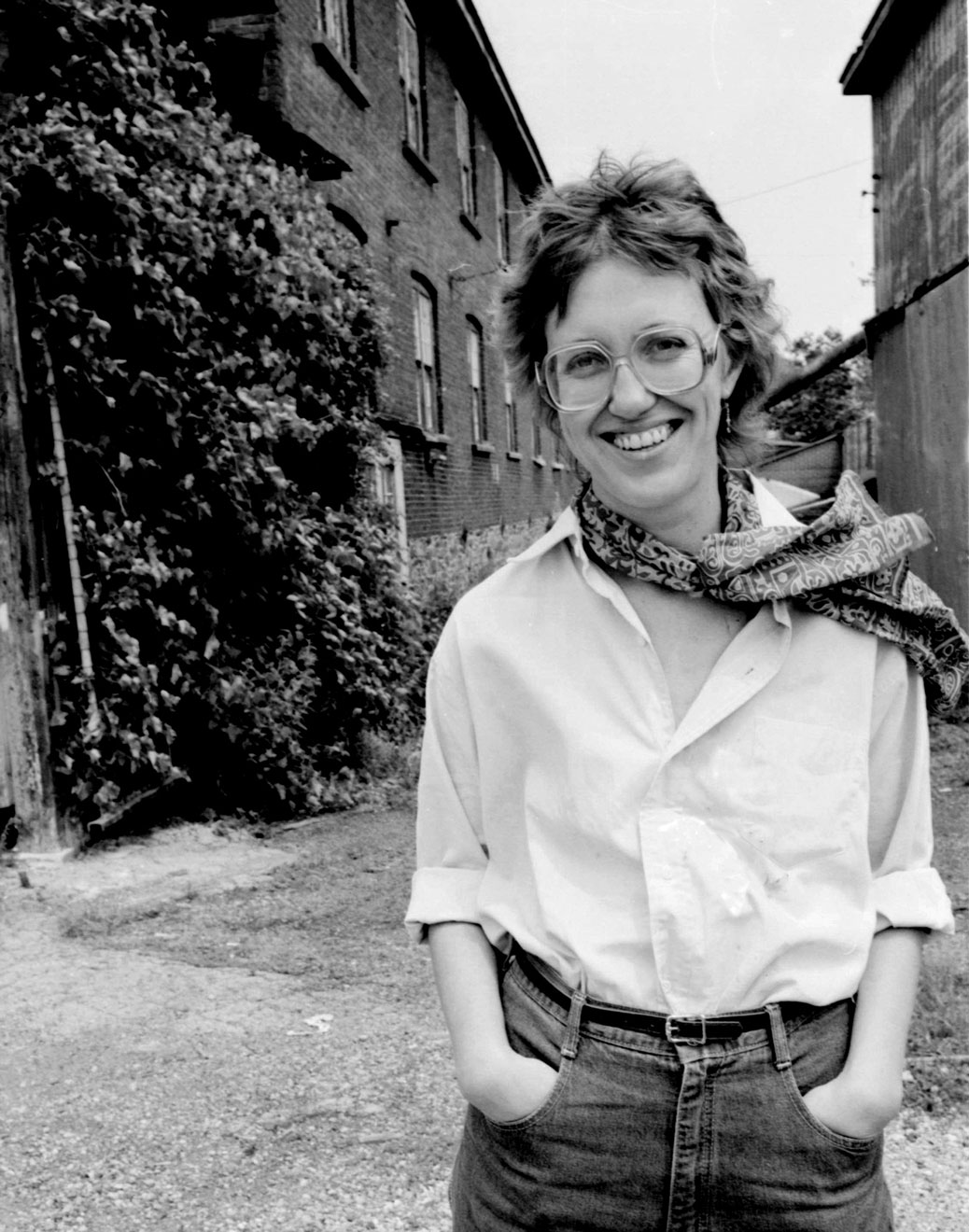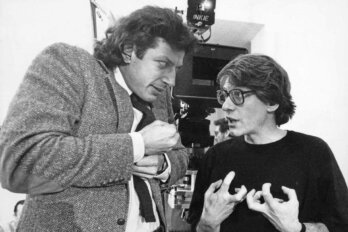In early January 2017, sixty-nine-year-old Robert Francis was sentenced for the long-term abuse of his common-law wife of forty-five years. As reported in the Kingston Whig-Standard, Francis’s extraordinary brutality had left his wife with multiple skull and rib fractures, at least one broken arm that hadn’t been set, cauliflower ears worthy of an old-time boxer, and scars on her arms and feet from what appeared to be cigarette burns. The violence had possibly contributed to brain damage so profound she could no longer speak.
Listen to an audio version of this story
For more audio from The Walrus, subscribe to AMI-audio podcasts on iTunes.
During the sentencing, Crown attorney Jennifer Ferguson adopted a highly unusual tactic—exhibiting verse as evidence. The poem offered up was, according to Ferguson, based on an incident in the life of Francis’s wife, whose home, in the judge’s words, appeared “to have been a torture chamber.” Ferguson read aloud from a passage that included the following:
This is for Ruth,
brought in by the police
from Hotel Dieu emergency
eyes swollen shut, broken jaw wired
and eighteen stitches closing one ear. This
is what a man might do
if his wife talked during the 6 o’clock news.
“And I knew better,” she tells us softly,
“I guess I just forgot myself.”
Tomorrow she may go back to him
(“He didn’t mean it, he’s a good man
really”), but tonight she sits up with me
drinking coffee through a straw.
Written by the late Kingston author Bronwen Wallace, these lines could be viewed as a type of reporting: they draw on Wallace’s experiences as a counsellor at the local chapter of Interval House, a shelter for women and children. For the extract to resurface a full twenty-seven years after her untimely death from cancer, in 1989, and play a role in the sentencing of a man convicted of domestic abuse is a remarkable testament to Wallace’s legacy as both a feminist and a fierce literary voice. Wallace used her poetry in a way that was then radical and today remains all too relevant: to bear witness and to nudge society toward something more livable and more fair.
Laudably, she didn’t sacrifice her craft in the process. On the contrary: to read “Intervals,” the long poem from which the court evidence was obtained, in company with the rest of her work in the new Collected Poems of Bronwen Wallace, is to be reminded why Wallace, by the time she died at the age of forty-four—only nine years into her publishing career—was being credited with fashioning something new. In disarming lines that make for addictive reading, she had successfully turned traditional poetic narrative, with its often distant, masculine voice and straight-ahead plot, on its head.
Edited and introduced by Carolyn Smart, Wallace’s friend and fellow poet, the 389-page Collected Poems brings together Wallace’s complete poetic output—the four books she published during her rapid literary ascent, the posthumous collection Keep That Candle Burning Bright and Other Poems, and some early unpublished work. Wallace was thirty-five when her first book appeared, in 1980, a co-publication with Montreal poet Mary di Michele called Marrying into the Family. (Her age is important to note: it’s why the RBC Bronwen Wallace Award for Emerging Writers, which the Writers’ Trust of Canada distributes annually, is for authors under thirty-five.) “To read the poems as they are collected here,” writes Smart in her engaging introduction, “is to trace the journey of a writer discovering her own strengths.”
Wallace was a storyteller. “When I think of the reader,” she once said, “she or he is not on this side of the poem while I’m on the other side. The reader stands beside me, and we’re reading the poem together.” Her loping lines reenact the way conversation can happen between women, how they might take a plot point and circle it, examining every angle and tangentially related anecdote, until some truth or possibility comes momentarily into focus. Tumbling down almost every page of the Collected Poems is a succession of urgent divulgences, unanswerable questions, and criss-crossing observations and speculations, all of which made her, according to poet and critic Gary Geddes, “an archaeologist of the emotions.”
Her poems, both in subject and style, ring powerfully amidst the #MeToo movement and the growing chorus of female voices around us. Italian author and pseudonymous sensation Elena Ferrante, with her series The Neapolitan Quartet, may have spurred an international shift with regards to the attention paid — and import granted—to friendship between women, but it’s a shift that Wallace quietly set the stage for here in Canada almost four decades ago. Reading Wallace is a reminder that the sources of these complex conversations run deep—generations deep. As Smart writes, Wallace’s “poems will welcome those who didn’t know her to a voice that speaks to any decade.”
I first encountered Wallace’s poetry in 2000, through a gift of her second book, Signs of the Former Tenant. I was hypnotized by the evening light in “Red Light, Green Light,” the book’s opening poem, how it “seemed to round and soften” the day’s heat and “gathered the sounds” of the children playing into itself. I loved how the narrator in “I Like to Believe My Life” wanted her life to be like a story, “slowly tidying itself.” I moved on to other books, other poems, such as “Coming Through” (from her third volume, Common Magic),with its equating of a friend to a “country,” which sets up the moving metaphor that the loss of such a friend can lead one into a kind of exile. I feel at home amid her juxtaposition of indoors and outdoors, her homely streetscapes, her ever-present neighbours and gathering friends. But it isn’t nostalgia that ties me to these poems any more than it was nostalgia that propelled Wallace. Instead, as one reviewer wrote in 1989, Wallace was drawn to “the violent intrusions that disturb the surface of everyday life.”
A striking percentage of Wallace’s poems incorporate kitchens. In fact, if you add in porches, gardens, living rooms, and neighbourhood streets, her entire oeuvre could be heaped onto that pile of so-called domestic verse. But don’t be fooled—life and death face off daily in these kitchens, the fallout griming countertops and caking onto pots. The physical settings of Wallace’s poems seem comfortable for a reason: they function as homes in which the brutal elements of existence can be studied with fierce attention. Thrilling (read: meaningful, brave, productive) conversations between friends don’t require mountaintops or war zones—they thrive in deceptively placid settings, where restless hands brush aside crumbs while the worst of life’s torments are explored:
What I love
is how these stories try to explain
the fit of things, though I can see
your mood’s for something more sinister.
Like the reason Diane Arbus gave
for photographing freaks, maybe?“Aristocrats,” she called them,
“they’ve already passed their test in life.”
Being born with their trauma, that is,
while the rest of us must sit around, dreading it.
Meaning you and me. Normal. Look at us,
practically wizened with worry, hunched
over coffee cups, whispering of cancer and divorce
As much as she was a writer, Wallace was also a feminist in the activist sense. She helped run a women’s bookstore in Windsor, where she lived during the 1970s. After moving back to Kingston in the 1980s, she became involved with Interval House and taught writing at Queen’s University. She wrote a feminist column for the Kingston Whig-Standard. She once spoke for abortion rights in the House of Commons alongside a group of women who chained themselves in protest. In a talk she gave in 1987, she spoke of the day when, as a student twenty-one years prior, she’d attended her first meeting about the “women’s movement.” She recalled, “For me, that meeting represented the first time I had ever been in a room full of women talking consciously about their lives, trying to make sense of them, trying to see how the unique and private anecdotes became part of a story that gave each of our lives a public and collective meaning as well.”
Coming up a full generation behind Wallace, I can claim no corresponding turning point. What I remember, as far back as memory goes, is my mother and her friends, my cousins, and me and my own friends talking in exactly that way, fully engaged in sharing and examining the events of our lives, their contexts and substrata, seeking sense and meaning. It’s a gripping, lifelong, all-in kind of project. It’s exactly what Wallace undertook in her poems: not to represent or mimic these conversations, not to make of them metaphors but to stage them in verse, to extract from them a form—and perhaps a new way of being in the world.
On page one of “A Simple Poem for Virginia Woolf,” Wallace’s attempt at “a salute” to Woolf is thwarted when her use of an egg as a metaphor reminds her of dirty frying pans and whether there are enough eggs left for breakfast. It’s a short hop to the price of children’s snowsuits, broken zippers, the daily hustle out the door. At first, it feels obvious, this interruption: of course the details of managing the household intrude on the female poet’s mind just when she’s paying homage to the very author who declared that a woman requires a room of her own in order to shut that clatter out. But follow Wallace’s plain words—some chopped, some stretching across the page—and you’ll arrive at a moment when the narrator confesses crying in the hospital parking lot, kicking a dent in her car’s fender after being turned away from intensive care, where her friend lies in critical condition, because “the friendship of women / wasn’t mentioned / in hospital policy.”
It’s hard to pinpoint the turn, but that’s not to say it feels out of place. This is just how intimate exchanges veer from the broadly philosophical to the keenly personal and back. It has to do with the poem’s failed effort to separate words “from the lives they come from.” Wallace’s message, in part, is that such efforts are misguided and that poetry needs to be prepared to accommodate the untidiness, the open-ended possibilities, of women’s perspectives.
To have Wallace’s poetic output gathered in this clean, full volume is a gift to readers and poets, likewise to CanLit and feminist scholars. In his obituary for Wallace in the Globe and Mail, Dennis Lee called her “new poetic instrument” a “folk-art form” and bowed down to her nerve as a “sophisticated” writer in taking that innovation on. Of her poems’ narrative underpinning, he wrote, in admiration of their complete disregard for conventional storylines, “Mostly the plots consist of vivid, unresolved middles.” Consider “Ruth” with eighteen stitches, sipping her coffee through a straw, who, tomorrow, “may go back to him.”
What other resolutions might that plot have had than its tragic end: the woman now bedridden and in long-term care? It’s such as-yet-unrealized endings—some not quite so dramatically different from the status quo but no less significant—that Wallace’s poems, through their weaving of evidence into art, remind us to look for and aim to create.





